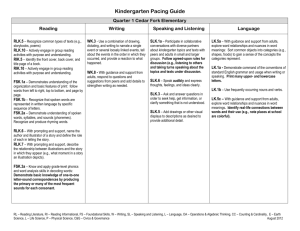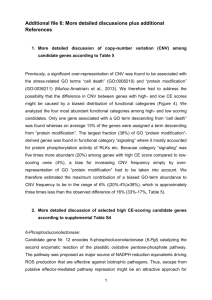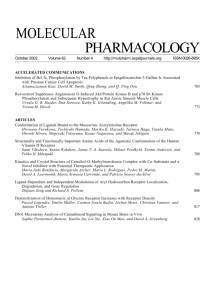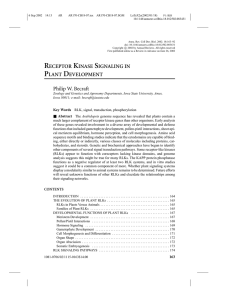Kinase superfamily analysis in land plants - Shiu Lab
advertisement
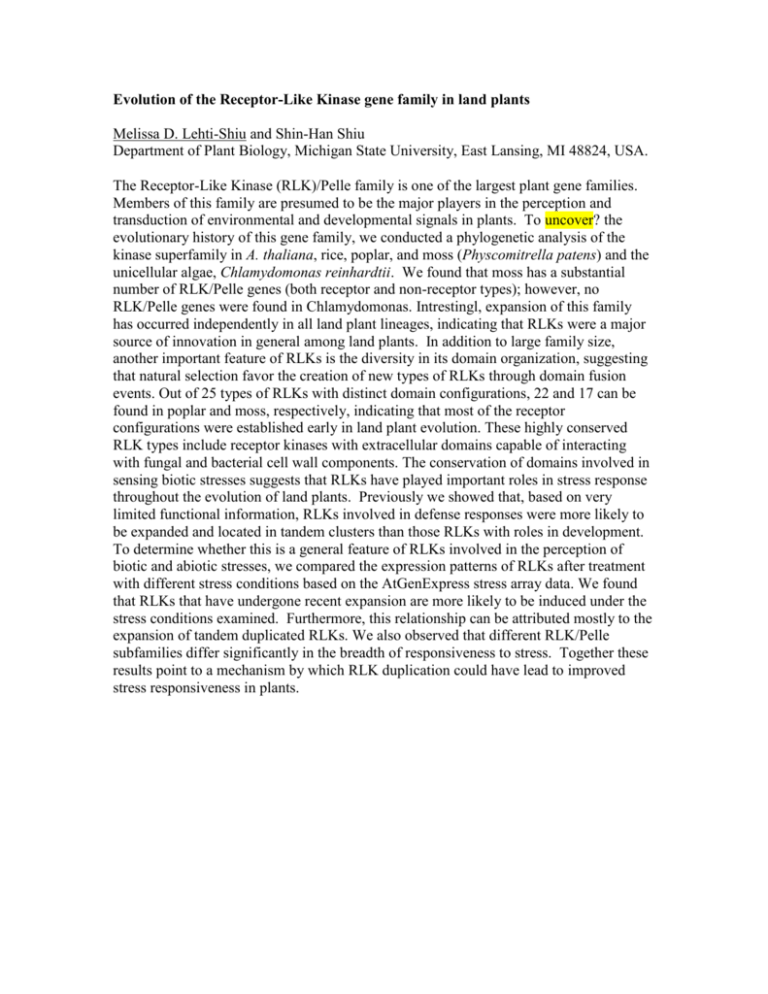
Evolution of the Receptor-Like Kinase gene family in land plants Melissa D. Lehti-Shiu and Shin-Han Shiu Department of Plant Biology, Michigan State University, East Lansing, MI 48824, USA. The Receptor-Like Kinase (RLK)/Pelle family is one of the largest plant gene families. Members of this family are presumed to be the major players in the perception and transduction of environmental and developmental signals in plants. To uncover? the evolutionary history of this gene family, we conducted a phylogenetic analysis of the kinase superfamily in A. thaliana, rice, poplar, and moss (Physcomitrella patens) and the unicellular algae, Chlamydomonas reinhardtii. We found that moss has a substantial number of RLK/Pelle genes (both receptor and non-receptor types); however, no RLK/Pelle genes were found in Chlamydomonas. Intrestingl, expansion of this family has occurred independently in all land plant lineages, indicating that RLKs were a major source of innovation in general among land plants. In addition to large family size, another important feature of RLKs is the diversity in its domain organization, suggesting that natural selection favor the creation of new types of RLKs through domain fusion events. Out of 25 types of RLKs with distinct domain configurations, 22 and 17 can be found in poplar and moss, respectively, indicating that most of the receptor configurations were established early in land plant evolution. These highly conserved RLK types include receptor kinases with extracellular domains capable of interacting with fungal and bacterial cell wall components. The conservation of domains involved in sensing biotic stresses suggests that RLKs have played important roles in stress response throughout the evolution of land plants. Previously we showed that, based on very limited functional information, RLKs involved in defense responses were more likely to be expanded and located in tandem clusters than those RLKs with roles in development. To determine whether this is a general feature of RLKs involved in the perception of biotic and abiotic stresses, we compared the expression patterns of RLKs after treatment with different stress conditions based on the AtGenExpress stress array data. We found that RLKs that have undergone recent expansion are more likely to be induced under the stress conditions examined. Furthermore, this relationship can be attributed mostly to the expansion of tandem duplicated RLKs. We also observed that different RLK/Pelle subfamilies differ significantly in the breadth of responsiveness to stress. Together these results point to a mechanism by which RLK duplication could have lead to improved stress responsiveness in plants.

